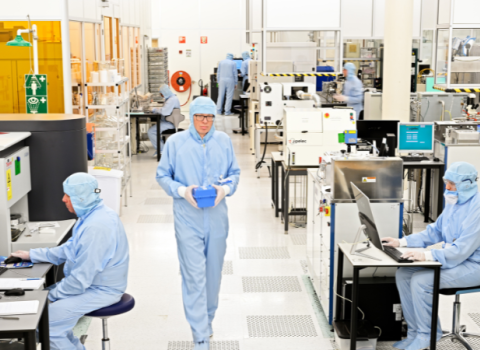The first version of the Destination Earth system will be launched on 10 June at an event which will take place at the LUMI data center in Kajaani, Finland. It is hosted by CSC – IT Center for Science as project partner. LUMI and CSC have played a significant role in the European Commission’s remarkable initiative to create a digital twin of the Earth by the end of this decade.
The first phase of the Destination Earth initiative has been completed, and the system will be launched at the official launch event on Monday, 10 June 2024. Destination Earth is a strategic information system that produces, at this stage, extreme weather and climate simulations of unprecedented accuracy. It will support decision-making, help in adapting to climate change, and draw conclusions on how to anticipate and mitigate its impacts.
Accurate simulations provide information for decision-making
The Destination Earth system can produce climate simulations with a resolution of up to five kilometers, compared to previous resolutions of between tens and hundreds of kilometers. These predictions are for the moment run over decades ahead up to 2040. For example, they provide accurate information on changes in wind, floods, forest fire risks or river flows in a given area. Such insights help e.g. in the planning of land use and investments, and the anticipation and prevention of the impacts of change.
The pan-European LUMI supercomputer, operated by CSC, has played a crucial role in running the first climate digital twin simulations. High-performance computing is central to the production of digital twins.
”LUMI has provided most of the computing capacity for the project. Millions of GPU- hours have been spent on the computing required for the project, and almost 10% of LUMI’s capacity to date has been used for Destination Earth. The demanding workflows of the project have been very complex. The success is a testament not only to LUMI’s computing power, but also to its modern architecture, which is suitable for demanding simulations,” says Destination Earth’s ClimateDT Principal Investigator and Director of Science and Technology at CSC Pekka Manninen.
CSC has led an international team on the project, which has produced its first version of the world’s climate simulations (Climate Change Adaptation Digital Twin). It was commissioned by the European Centre for Medium-Range Weather Forecasts (ECMWF).
Further phase based on AI and a language model has started
The next phase of the initiative is already underway. A large work package based on AI solutions is underway.
As part of the work package, an interface based on natural language and a language model will be built, through which any question related to climate change can be asked. Researchers and other users of the system can use it to ask “what-if” questions to find concrete answers to support decision-making. The next step will also be to improve the margin of error of the forecasts, which will verify the predictive power of the simulations.
“The project partnership in the Destination Earth initiative is strategically very important for CSC, combining its expertise in high-performance computing, data analytics and artificial intelligence. Today, we are celebrating the completion of the first phase, and we are delighted to continue to be a partner in the initiative in its various aspects,” says CSC’s Managing Director Kimmo Koski.
Destination Earth is a European Commission-funded strategic initiative implemented by the European Space Agency (ESA), the European Centre for Medium-Range Weather Forecasts (ECMWF), and the European Organisation for the Exploitation of Meteorological Satellites (EUMETSAT). More than 100 public and private partners are also involved in building the system.
This article was first published on 10 June by CSC – IT Center for Science.





 A unique international forum for public research organisations and companies to connect their external engagement with strategic interests around their R&D system.
A unique international forum for public research organisations and companies to connect their external engagement with strategic interests around their R&D system.